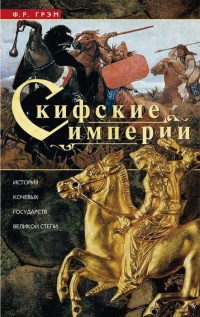Читать книгу "Узурпаторы и самозванцы "степных империй". История тюрко-монгольских государств в переворотах, мятежах и иностранных завоеваниях - Роман Почекаев"
Шрифт:
Интервал:
Закладка:
Soni 2007 — Soni S. K. Mongolia and the Mongols: From Mongol Yuan dynasty to Manchu-Qing Overlordship // Монгол судлалын огуулууд- Essays on Mongol studies. Улаанбаатар, 2007. T. 148163.
Soucek 2003 — Soucek S. A History of Inner Asia. Cambridge, 2003.
Subtelny 2007 — Subtelny M.E. Timurids in Transition. Turko-Persian Politics and Acculturation in Medieval Iran. Leyden; Boston, 2007.
Thum 2012a — Thum R. Beyond resistance and nationalism: local history and the case of Afaq Khoja // Central Asian Survey. Vol. 31 Iss. 3. 2012. P. 293–310.
Thum 2012b — Thum R. Modular History: Identity Maintenance before Uyghur Nationalism // The Journal of Asian Studies. Vol. 71. Iss. 3. August 2012. P. 627–653.
Tian 2012 — Tiati H. Governing Imperial Borders: Insights from the Study of the Implementation of Law in Qing Xinjiang. Ph. D. Diss. Columbia University, 2012.
Weatherford 2010 — Weatherford J. The Secret History of the Mongol Queens: How the Daughters of Genghis Khan Rescued His Empire. New York, 2010.
Wing 2007 — Wing P. The Jalayrids and Dynastic state formation in the Mongol Ilkhanate. Vol. I–II. Ph. D. Diss. Chicago University, 2007.
Zarcone 1996 — Zarcone T. Soufis d’Asie centrale au Tibet aux XVIe et XVIIe siecles // Cahiers d’Asie centrale. № 1–2. 1996. P. 325344.
The book Usurpers and Impostors in the "Empires of the Steppe": History of the Turkic-Mongol States in Coups d’etat, Rebellions and Foreign Invasions by Roman Pochekaev, professor of National Research University Higher School of Economics devoted to problems of fight for power in the Turkic-Mongol states since the Great Mongol Empire in the middle of the 13th c. to last "traditional" states of Central Asia in the middle of the 20th c. We could say that the history of these states was, in fact the history of usurpations and (to a smaller extent) impostures. Nevertheless, author doesn’t tell the "sequential" history of Turkic-Mongol states, but attempts to analyze the most specific or, on the contrary, most typical cases of fight for power.
Cases of usurpations and impostures are described under "geographica" principle. So, the first Chapter devoted to fight for power in the Mongol Empire and Yuan Empire. In the second chapter author characterizes political fight in Chaghaday Ulus. Third chapter is about fight for power in Ilkhanate and its sucessors (including states which didn’t pretend for Chinggisid legacy). In the forth chapter usurpers and impostors of the Ulus Jochi (the Golden Horde) are described, whereas next, fifth chapter devoted to political fight in states — heirs of the Golden Horde. Special, sixth, chapter is about political processe in Kazakhstan since the 18th to the 20th cc. Political processes in different states of Central Asia are descrivbed in the seventh chapter. An the last, eighth, chapter author characterizes fight for power in Mongolian states after the fall of the Yuan Empire.
In spite of different regions, different epochs and different political situation in Turkic and Mongol states (including even religious difference) we could say that a lot of methods and ways to legitimate claims for the throne were common for pretenders in all above-mentionpd states. And even in the 20th c. some usurpers used instruments of political fight which were developed during the Middle Ages. This trend allows us to state that political and legal traditions in the Turkic-Mongol World are very long-lived and study of political processes of former times could help to understand better modern political situation in Eurasia.
Внимание!
Сайт сохраняет куки вашего браузера. Вы сможете в любой момент сделать закладку и продолжить прочтение книги «Узурпаторы и самозванцы "степных империй". История тюрко-монгольских государств в переворотах, мятежах и иностранных завоеваниях - Роман Почекаев», после закрытия браузера.




